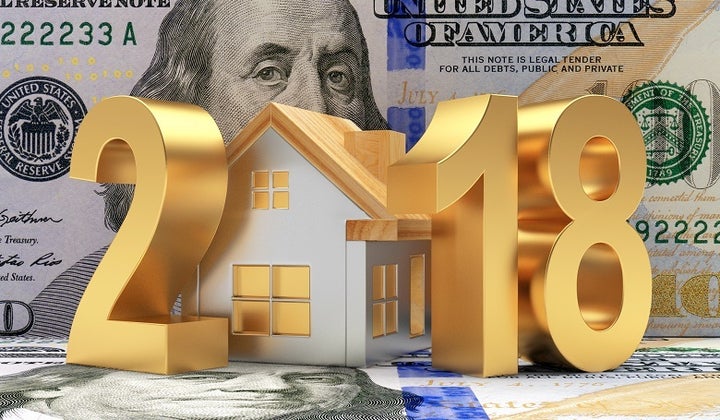
Are you preparing to enter the housing market in 2018? Whether you're a buyer or a seller, 2018 is likely to be a year of both challenges and opportunities. Our crystal ball is just as cloudy as everyone else's these days, but based on recent trends and events, we can make a few predictions for the upcoming year.
Inventory Remains King – The housing market has been partially throttled by a short supply of homes, especially in the starter home market. At the beginning of the fourth quarter, over half of available homes were in the top third of home values. Supply should continue to increase and ease price pressures by the end of the year, but the total supply will still fall short of overall demand.
Slower Growth in Home Prices – Zillow reports that home prices are expected to rise 4.1% in 2018, a decrease from today's 6.9% growth rate but well above the typical growth rate near 3%. Realtor.com expects a closer-to-average growth rate of 3.2%. This reflects an expectation that supply problems will ease somewhat – good news for homebuyers, but bad for homeowners who simply want to see the value of their home increase.
Interest Rates Will Increase – How many times have you heard that one? This year, it's likely to come to pass. Interest rates have risen slightly thanks to three small rate increases by the Federal Reserve, and the pace is likely to continue. Realtor.com and the Mortgage Bankers Association both expect the interest rate on a 30-year fixed loan to reach 5% during 2018 – the highest level since February 2011.
Entry-Level Homes Rebound – Typically, developers focus on middle to upper-end housing. High land expenses, labor costs, and regulatory burdens make it difficult to get a suitable return on investment with more affordable housing. However, a lack of inventory and more Millennials entering the market should drive up entry-level prices and make them tempting targets for developers. It's likely that there will still be a shortage of affordable housing, but expect supply in this segment to increase and for prices to stabilize.
Overall, housing starts are expected to rise by 3% over the previous year, with single-family homes increasing at a brisk 7%. New home sales are predicted to increase by 7% over 2018, while existing home sales are predicted to increase by only 2.5%.
Tax Plan Effects – The final tax bill is likely to depress the housing market, especially in certain areas. Collective state and local tax deductions are now limited to $10,000; therefore, the overall tax bills in states with high taxes and high property values could increase significantly. These markets should see reduced appreciation on homes as buyers find the local market less desirable. Mortgage interest deduction limits on new homes were cut to $750,000, further hitting the high-value markets.
The effects are not all at the upper end of the scale. The increase in the standard deduction reduces the tax incentives for lower and middle-income consumers to purchase a home. The pace of new home construction and sales may be dampened as a result. However, Moody's predicts some rural areas will see a rise in home prices as a result of the tax bill – mostly in the West, Upper Midwest, and Alaska.
Suburban Sprawl Increases – Housing disincentives in urban areas are likely to drive Millennials and other first-time home buyers further out into the suburbs, where developers can build more affordable homes via lower land costs.
In general, the market should begin to shift away from the current supply imbalance, blunting price increases. Homeowners will see lower rates of appreciation than they have in recent times, giving new opportunities to first-time homeowners.
However, generalities aren't important to you – you only care about your local market and the value of your home. Keep a close eye on your local market for any factors that run counter to national trends, and you'll be in position to make the most of your buying and selling opportunities in 2018.
This article was provided by our partners at moneytips.com.
Read more from MoneyTips:
Photo ©iStockphoto.com/Ravitaliy